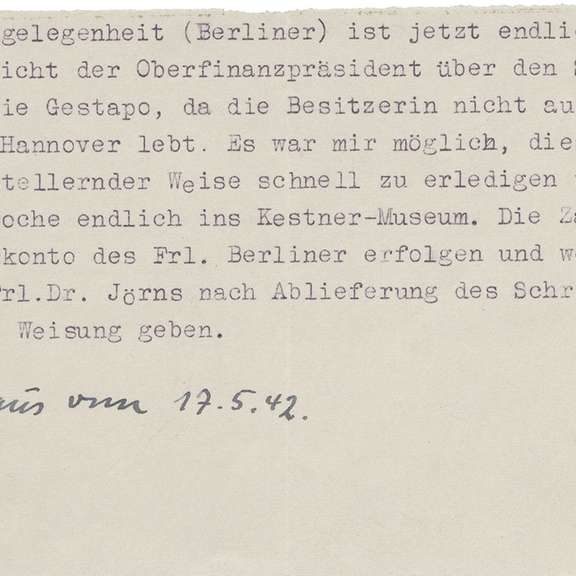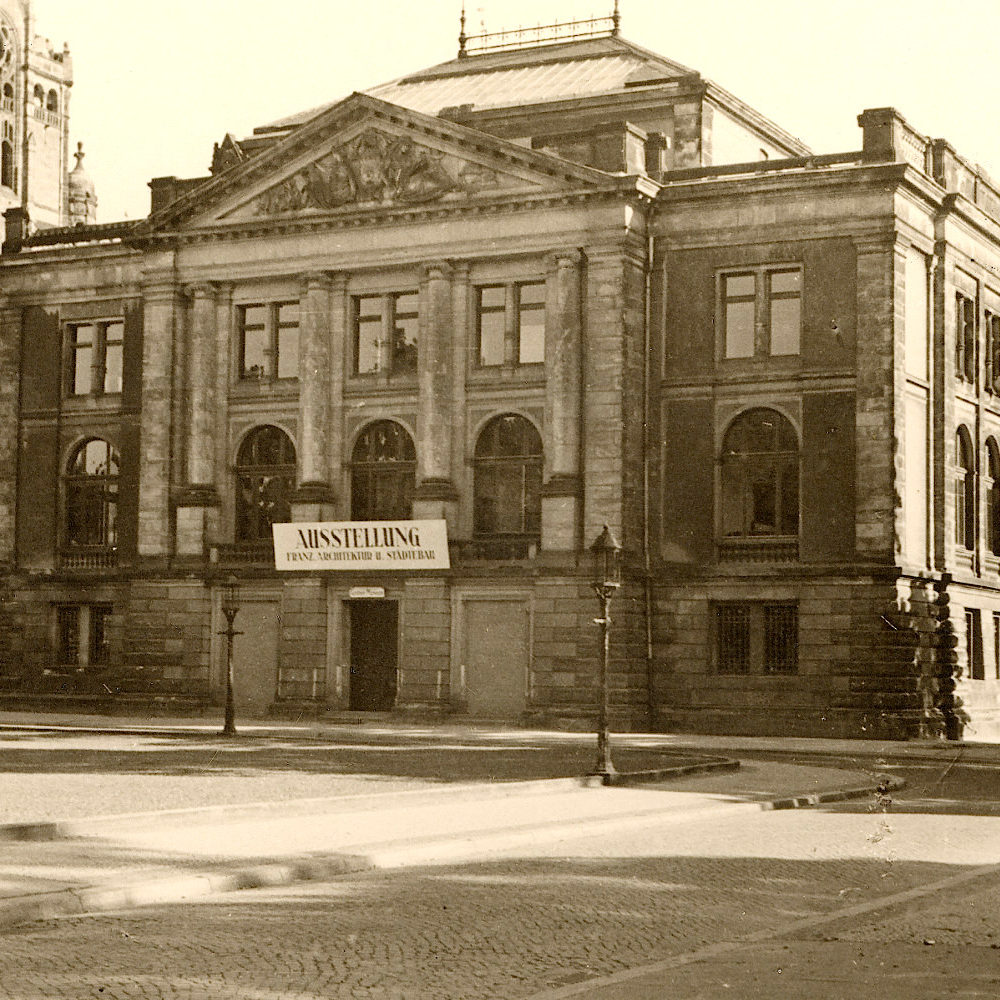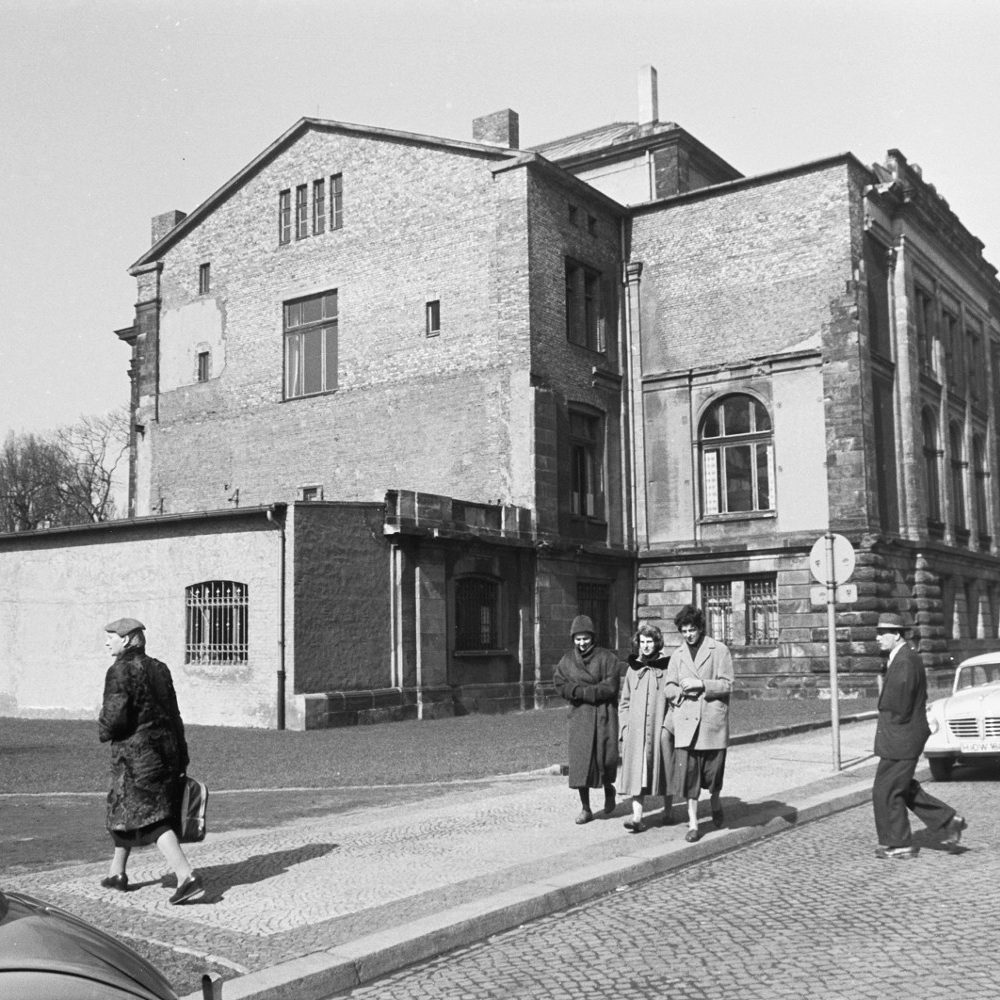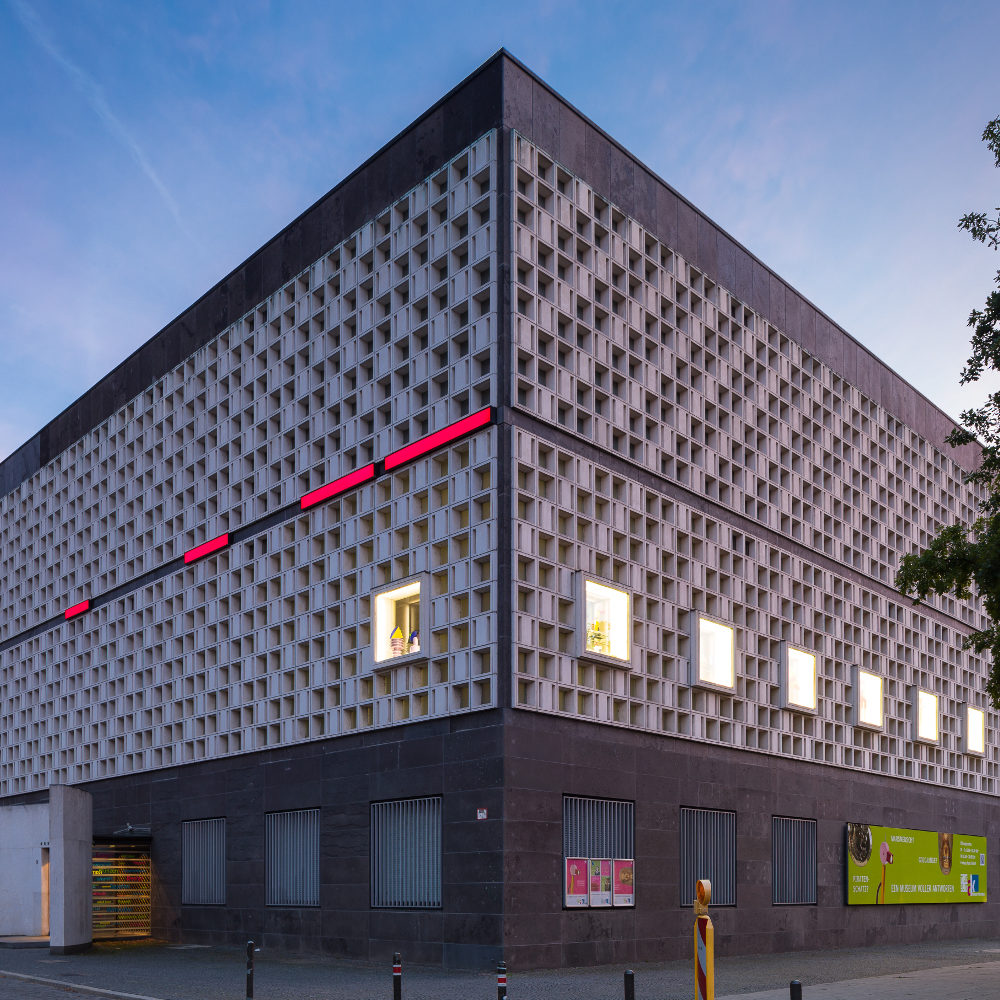The Museum August Kestner is the oldest museum in Hanover. In 1884, Hermann Kestner donated the sizeable collection of Ancient Egyptian antiquities and art belonging to his uncle August Kestner, his own private art collection and that of his father Georg Kestner to the city of Hanover on condition a fitting home be found to house these artefacts. During the National Socialist period, the museum, like many other cultural institutions, acquired works of art that had belonged to Jews but had been confiscated.
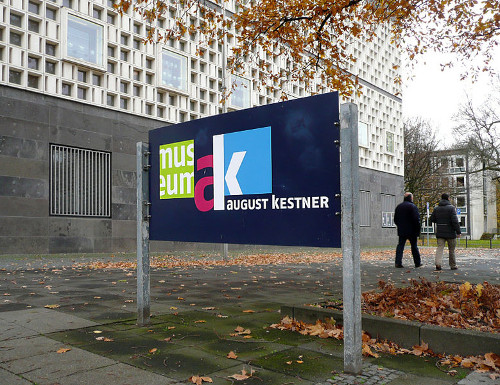
Sale of Jewish property
On 3 September 1941, all of the approximately 1600 Jews still living in Hanover are informed by the police that they must vacate their homes by the end of the following day. They are placed together in 15 “Jewish houses” within the city – in preparation for their imminent deportation from Germany. Any property left behind is seized by the Gestapo. Private auctioneers estimate the value of the fixtures and fittings while they are still in the vacated property on behalf of the city authorities. The items are then taken to municipal warehouses. In order to safeguard art treasures of public interest, these are valued by a commission and if they are of interest segregated from the other items. One of the members of the commission is the curator of the Kestner Museum, Dr. Ferdinand Stuttmann.
The Rococo armoire belonging to Klara Berliner
On 4 September 1941, Klara Berliner (1897-1943) is forced to move out of the “Villa Simon” in Brühlstrasse 7 and brought to the “Jewish house” in Brabeckstrasse in Kirchrode. Up until then it had been an old people’s home belonging to a Jewish foundation. As the daughter of Joseph Berliner and thus a member of Hanover’s most prominent Jewish family of inventors and industrialist family, she is the sole heiress of the grand mansion and its contents on the death of her father in 1938. On 16 September 1941, an auctioneer estimates the value of the remaining items. They include an armoire made of walnut, a period antique from the 18th century.
Ferdinand Stuttmann – as the designated “Expert of the Reich Chamber of Fine Arts” – is sent on an official assignment, with the involvement of the financial authorities, to negotiate acquiring the armoire for the Kestner Museum. However, there is just one difficulty: at this point Klara Berliner is still in Hanover. And according to a directive of November 1941, the assets of Jews are only forfeited when they cross the German border, that is, at the moment of deportation. Therefore, in order to maintain some semblance of legality, the city authorities must purchase the armoire from the owner on behalf of the Kestner Museum. In May 1942, she receives the sum of 1500 Reichsmark… but it is deposited in a frozen account… to which she has no access… and which becomes the property of the treasury when she is deported. The armoire is later placed in Stuttmann’s office as curator and survives the war. Klara Berliner dies shortly after arriving at Theresienstadt concentration camp.
The Max Rüdenberg collection
The Jewish businessman Max Rüdenberg (1863-1943) operates a bed feather factory in Hanover-Limmer and for his company he regularly sources down feathers from China. Through a middleman, he buys Chinese artworks and gets them safely transported to Europe in the bales. In this way he builds up an impressive collection of East Asian art. He is already well aware of the interest shown by the city’s Kestner Museum in his East Asia collection. At the end of 1940, he offers his collection to the city authorities on condition that he be spared anti-Jewish measures such as being evicted from his home. Except that things turn out differently. From the spring of 1941, air raids on Hanover intensify and the city authorities offer Max Rüdenberg to store his art treasures where they will be safe from the bombs, courtesy of the Kestner Museum. He agrees to this. And his collection is still there when, in July 1942, all his possessions become the property of the German Reich when he and his wife are deported to Theresienstadt concentration camp. Both die there shortly after arriving.
An enforcement official from the tax office assesses the value of the approx. 400 pieces comprising the East Asia collection at the Kestner Museum. Stuttmann, the curator, selects 49 items for acquisition by the museum; the rest is sold at public auction with the proceeds going into the Reich treasury.
Restitution – compensation
In a will dated December 1941, Klara Berliner names her cousin Cora Berliner as her sole heir. In 1933, the renowned economist had been dismissed from the Prussian civil service on racial grounds. In 1942, Cora Berliner is deported from Berlin and murdered in what is now Belarus. Her four siblings survive in the USA. By citing a law enacted by the military government for the “Restitution of Property to Victims of Nazi Oppression”, they demand on the one hand the return of the estate and house, and on the other the estimated value of the household contents. In 1952 and 1956 respectively, they are successful in achieving this. However, in the valuer’s report, the valuable rococo armoire is just listed as a cheap “linen cupboard”. Only a few years ago, the armoire still stood in the permanent exhibition of the August Kestner Museum without any hint of its true origin.
In 1949, the children of Max and Margarethe Rüdenberg, who managed to emigrate in time, demand the return of their father’s art collection from the City of Hanover. With the exception of five objects that had vanished, the 49-piece East Asia collection acquired by the Kestner Museum had survived being moved to a mine tunnel near Helmstedt. In 1950, it is returned to the family, together with the property in Hanover-Limmer.
The building today
During the Second World War the museum building is badly damaged by bombs. However, in advance of the air raids, large sections of the museum’s collections have been stashed away in mine tunnels near Helmstedt and in vaults across Hanover. As early as 1947, temporary exhibitions can once again be held in makeshift spaces in the museum. The severely destroyed south library wing is not reconstructed; since 1961, the main building has been surrounded by a new cube-shaped building with a grid of 5000 windows and the floorspace has been extended.
Special exhibition on looted property and restitution
It was not until the exhibition “Traces of Nazi persecution. On the origin and whereabouts of cultural artefacts in the collections of the City of Hanover”, held between December 2018 and September 2019, that the story of Klara Berliner’s persecution by the Nazis was addressed in full detail for the first time. It also showed the ongoing efforts of the Provenance Research Unit of the state capital Hanover.
Further information
Wikipedia entry Museum August Kestner
Provenance Research Network in Lower Saxony [in German]
hannover.de Restitution of East Asian Decorative Arts from the Max Rüdenberg Collection
Cornelia Regin, Vanessa-Maria Voigt: Expropriated. Destroyed. Compensated. The Gustav Rüdenberg Art Collection 1941–1956 (PDF) [in German]
Lebensraum Linden About Max Rüdenberg [in German]
bpb Michael Franz Museums, Looted Art and Nazi-confiscated Art [in German]
Lost Art Database
SAT1 Regional Exhibition displays objects confiscated by the Nazis [in German]
Audio recording Klara’s armoire. In search of the heirs of Nazi-confiscated art [in German] by Lorenz Schröter. Production: Deutschlandfunk/NDR 2020
Further reading: Click here
Texts and images: Michael Pechel

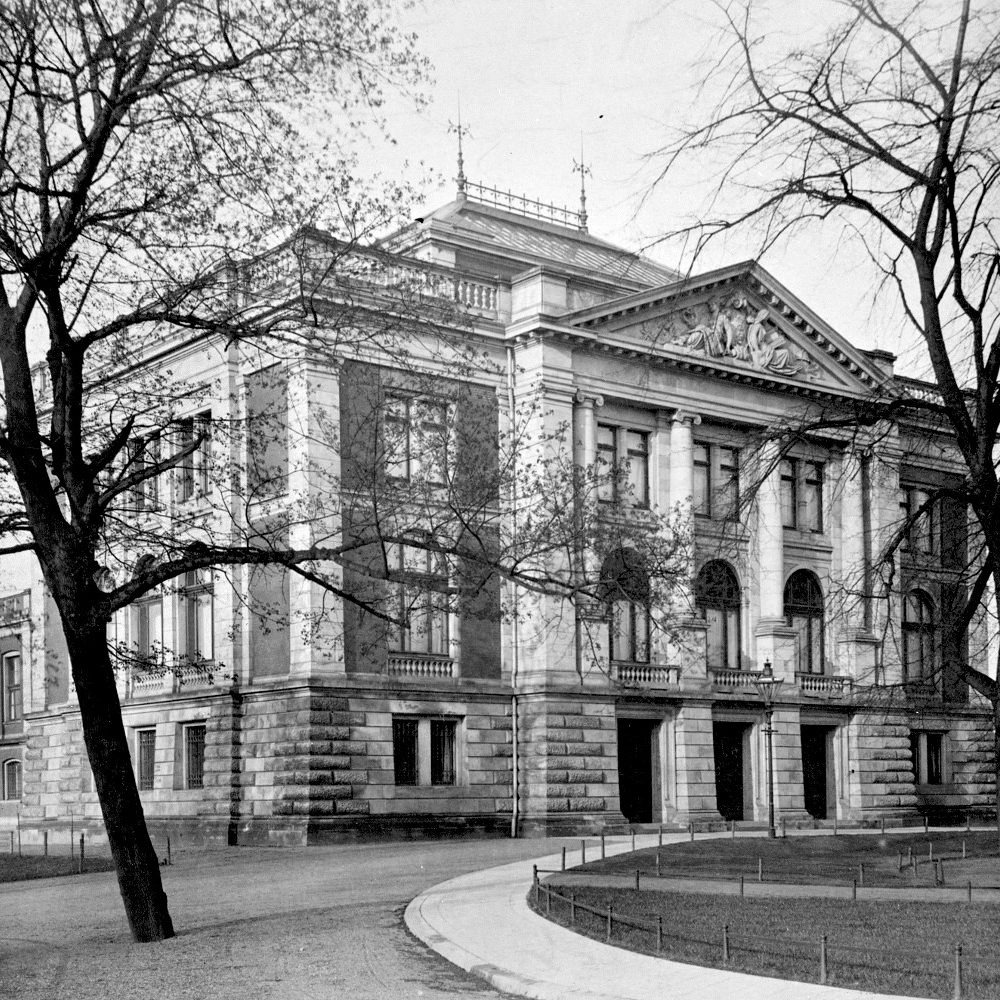
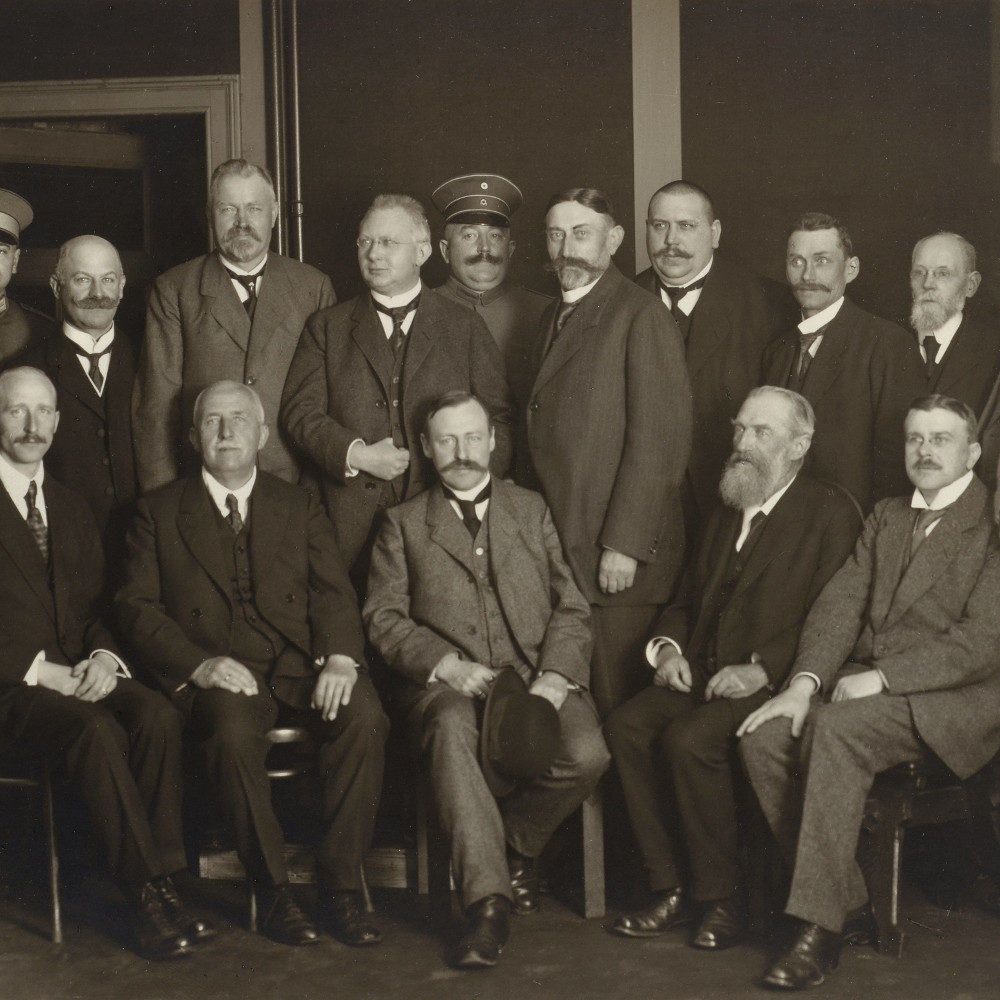
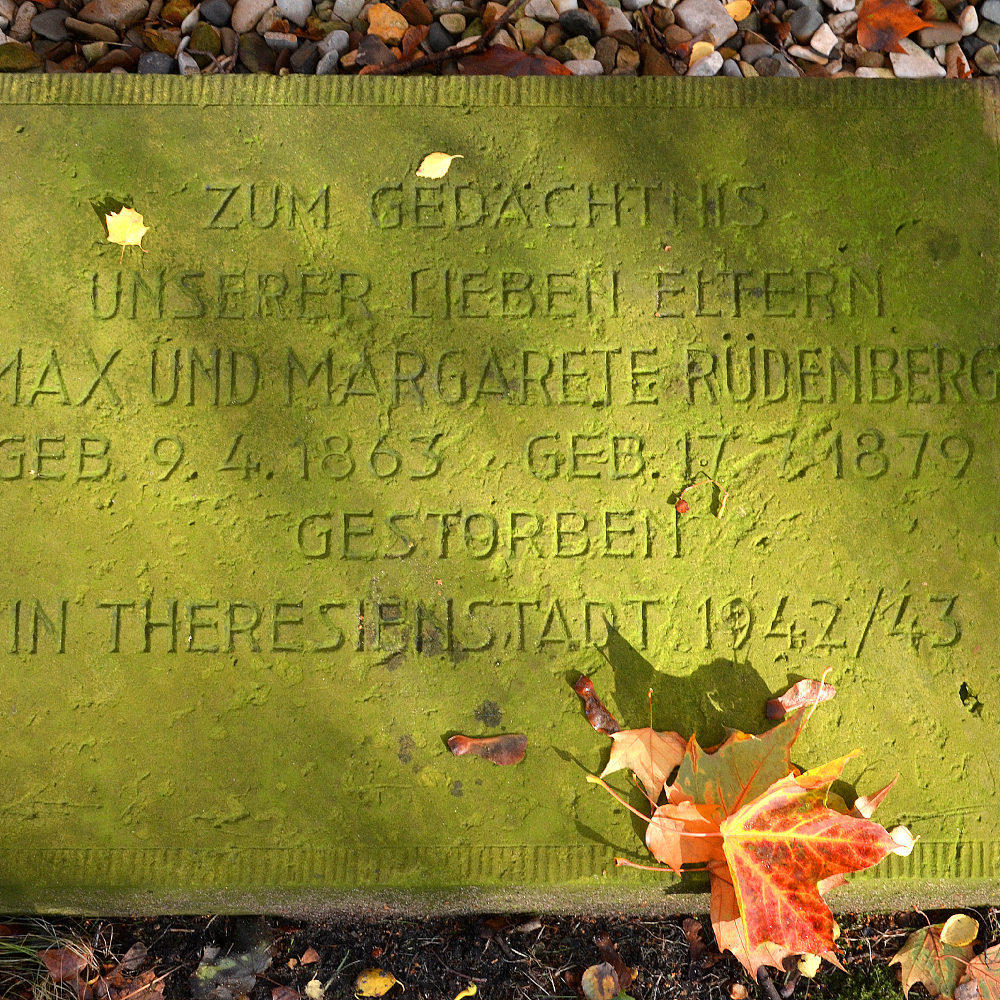
![Hanover: Portrait of the art historian Dr. Ferdinand Stuttmann (1897-1968). 1938-1945 head of the art department at the Landesmuseum [Lower Saxony State Museum] and the decorative arts collection at the Leibnizhaus, and also curator of the Kestner Museum. 1952-1962 director of the Lower Saxony State Museum. Photo undated. Historical Museum of Hanover](https://zukunft-heisst-erinnern.de/wp-content/uploads/2020/03/landesmuseum_4-680x680.jpg)
